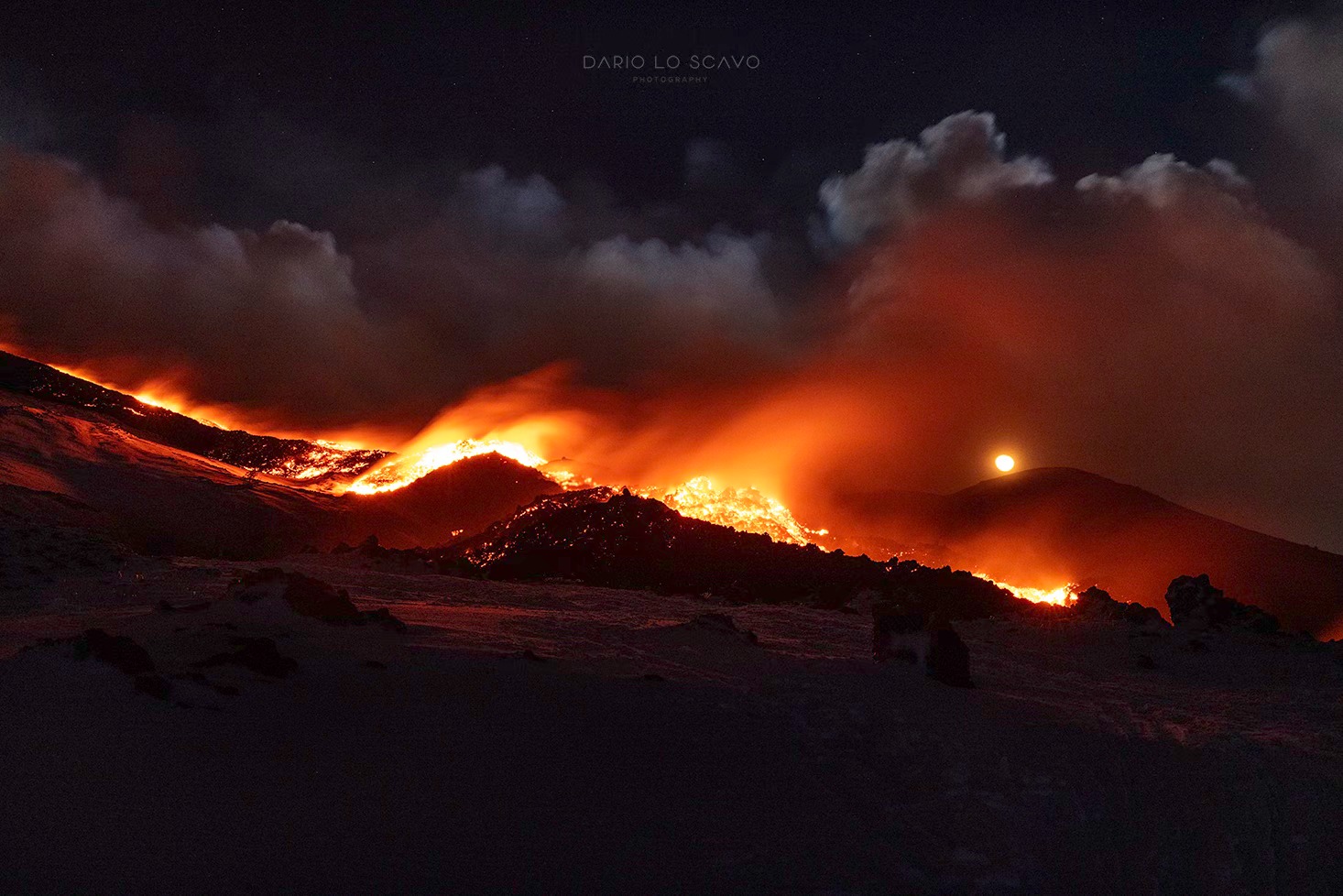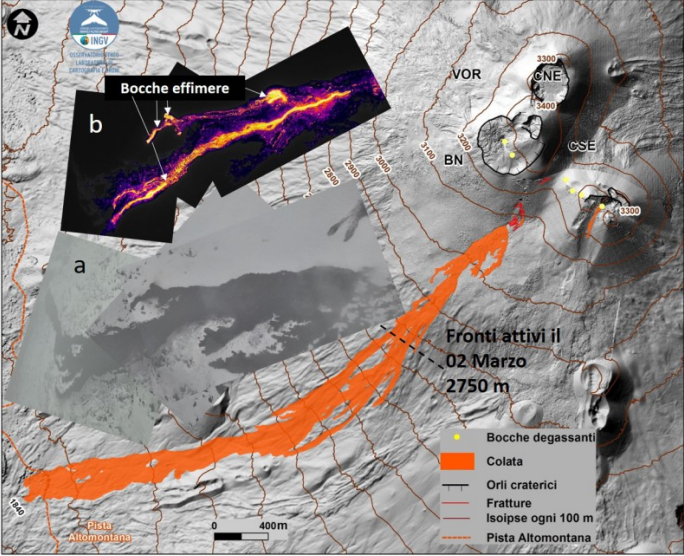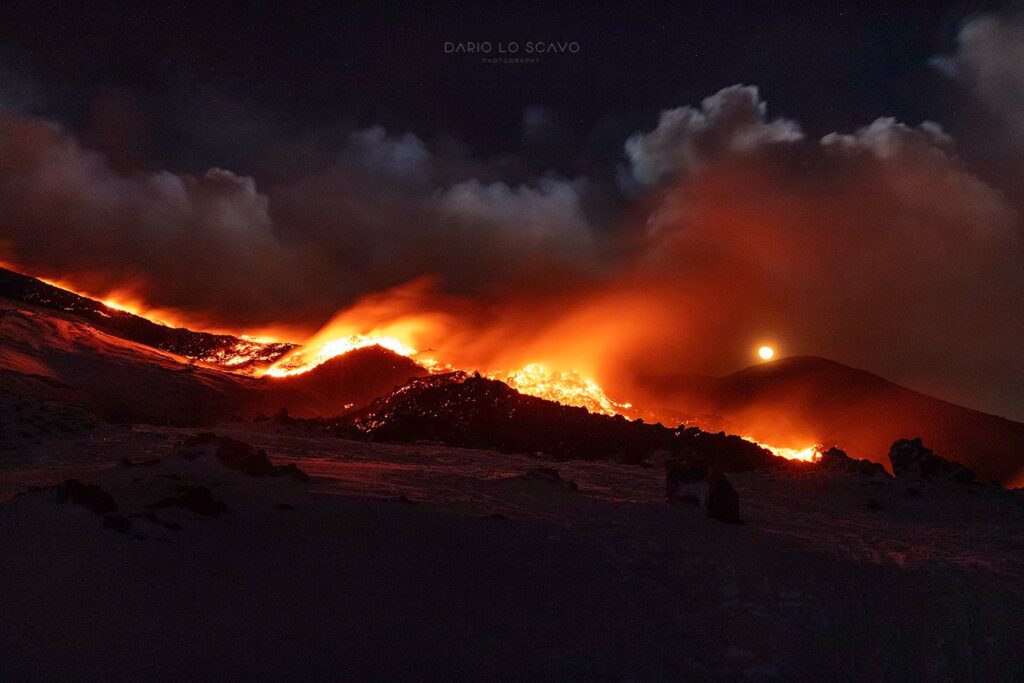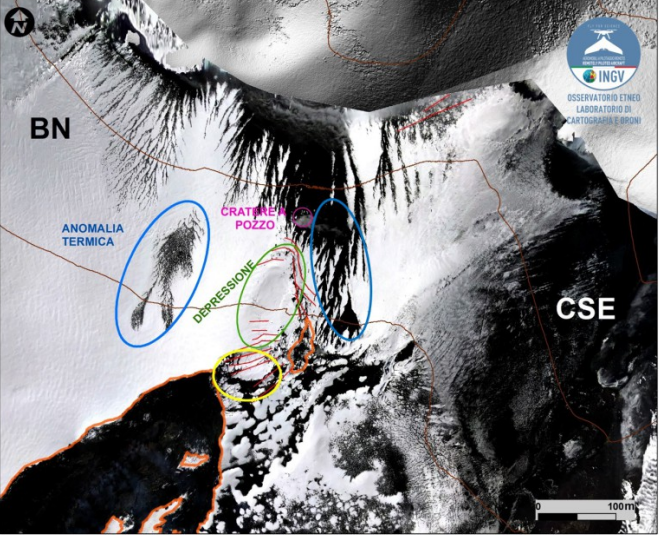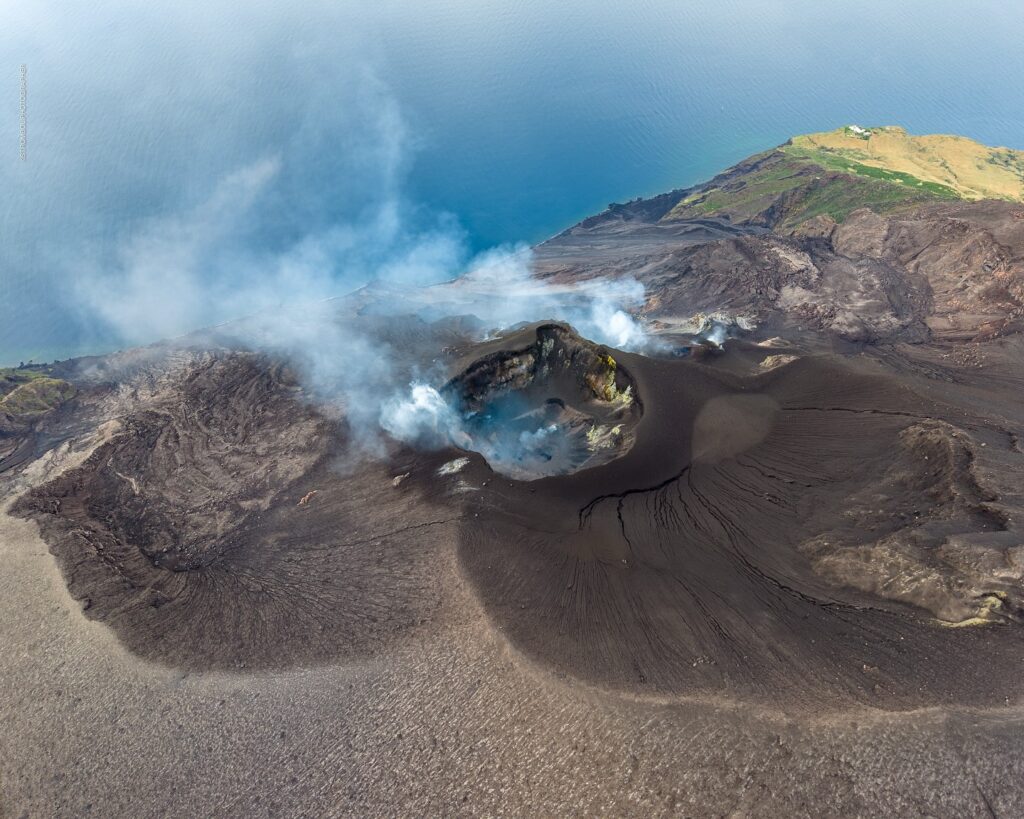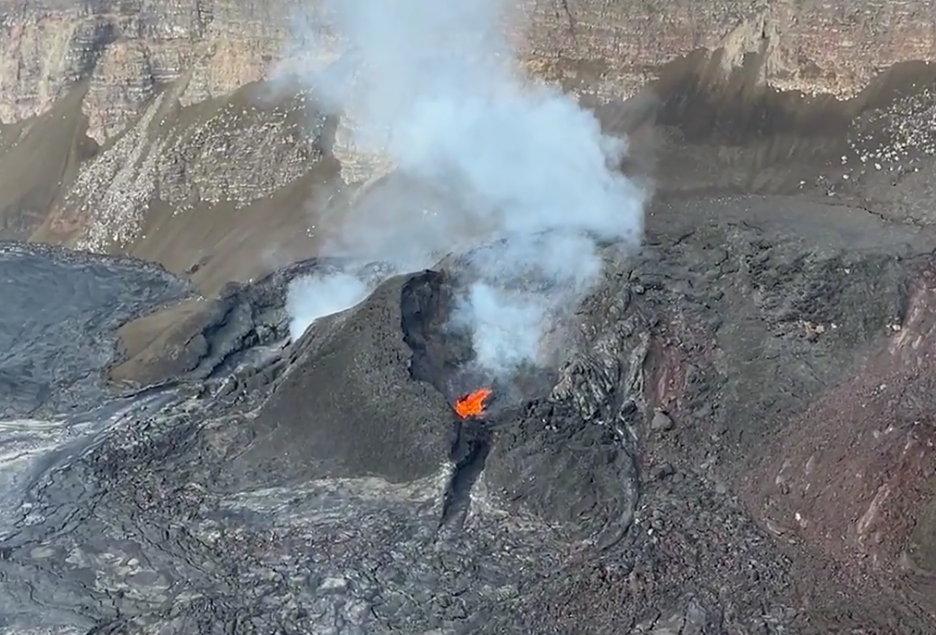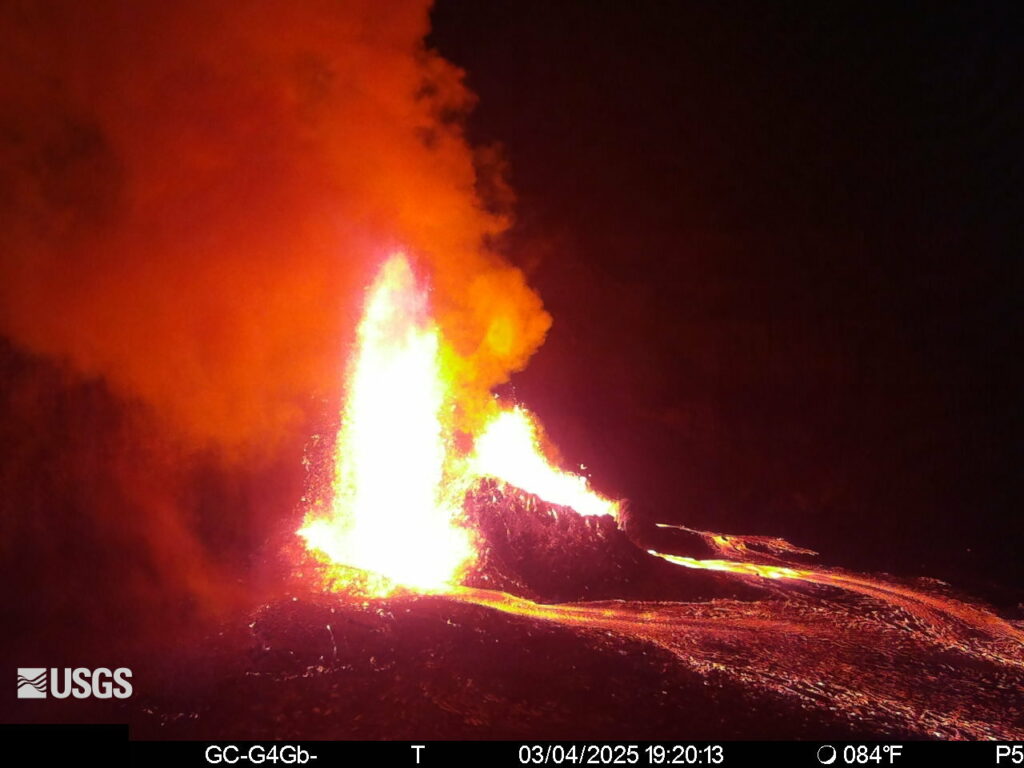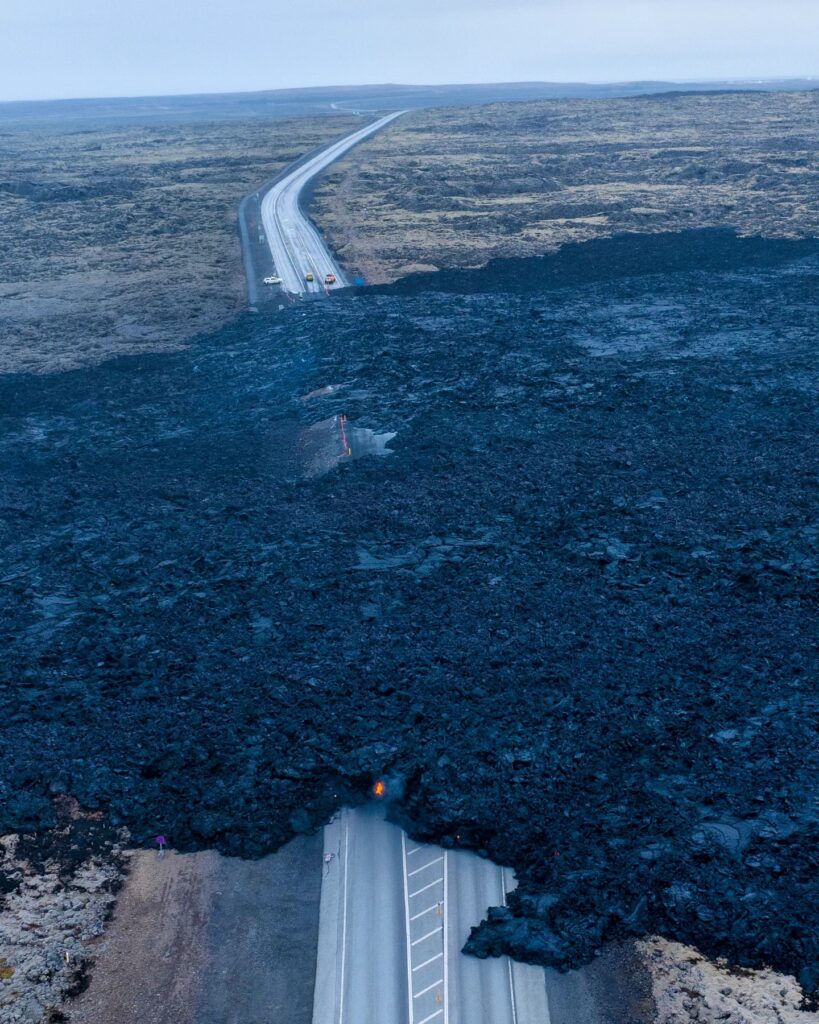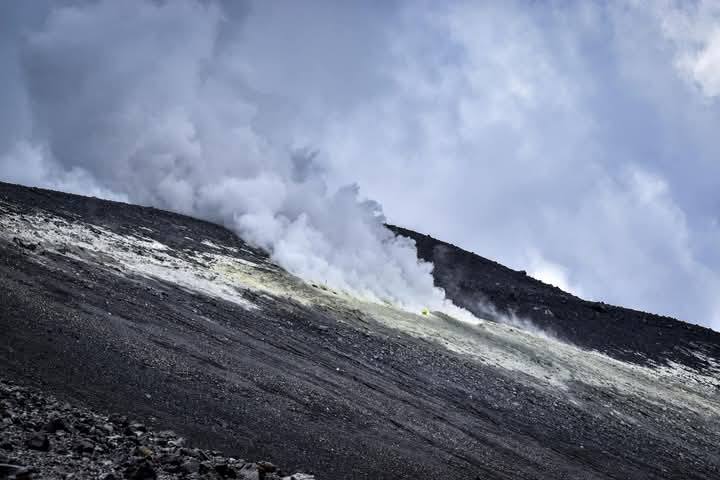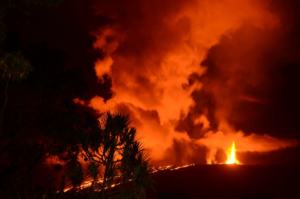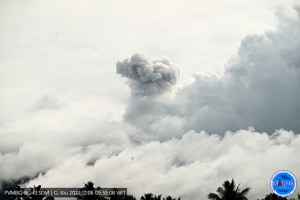March 05 , 2025.
Italy / Sicily , Etna :
WEEKLY BULLETIN, from February 24, 2025 to March 02, 2025. (issue date March 04, 2025)
SUMMARY OF ACTIVITY STATUS
In light of monitoring data, it is highlighted:
1) VOLCANOLOGICAL OBSERVATIONS: Effusive activity from an eruptive fissure at the base of the Bocca Nuova crater, Strombolian activity at the Southeast crater and degassing at the Bocca Nuova, Voragine and Northeast craters.
2) SEISMOLOGY: Low seismic activity due to fracturing. Average amplitude of volcanic tremor fluctuating between medium and high level.
3) INFRASOUND: Moderate infrasound activity with sources located in the Southeast crater area (SEC).
4) GROUND DEFORMATIONS: Over the past week, the ground deformation monitoring networks have not recorded significant variations.
5) GEOCHEMISTRY: SO2 flux at medium-high level.
Soil CO2 flux (EtnaGas Network) on average values.
The partial pressure of dissolved CO2 in the aquifer (Ponteferro) shows values within seasonal variability.
Isotopic ratio of peripheral sites: Latest data (19/02/2025) on medium-high values.
6) SATELLITE OBSERVATIONS: The thermal activity observed by satellite in the summit area was generally high to very high in correspondence with the eruptive activity.
VOLCANOLOGICAL OBSERVATIONS
During the week, the monitoring of the volcanic activity of Etna was carried out through the analysis of images from the surveillance cameras of the INGV – Etneo Observatory (INGV-OE), field inspections, carried out by INGV-OE staff using drones and satellite images. The observations from the surveillance cameras were intermittent due to adverse weather conditions.
Fig. 3.1 Map of the lava field, updated on 02 March, superimposed on the shaded relief of the terrain obtained by processing the images acquired by drone on 12 September 2024 and 28 March 2025, for the BN, VOR and CNE craters, and on 31 July 2024 for the CSE. CSE = Southeast Crater, CNE = Northeast Crater VOR = Voragine BN = Bocca Nuova. Geoidal contour lines every 100 m. a) Visible lava field and b) thermal image taken by drone on 2 March
In particular, two inspections were carried out with drones on 28 February and 2 March which made it possible to characterise the area of the effusive fissure and to identify at least four ephemeral vents that characterise the lava field (see white arrows in Figures 3.1 b and 3.2). The active fronts on 28 February were at an altitude of 2750 m, the total area covered by the lava field is equal to 7 × 10 5 m 2 , the emitted volume is equal to 4.5 × 10 6 m 3 . The effusive fissure zone is characterized by multiple fracture systems (red lines). The first delimits a depression, about 150 m long, typical of a detachment niche (green ellipse), the second has a dominant North/East/Southwest direction. The area behind the fissure is strongly fumarolic (yellow ellipse). On 28 February, at an altitude of 3180 m, a pit-shaped crater about 5 m in diameter was observed; thermal camera images showed that this crater is cold. Thermal anomalies nevertheless persist both about a hundred meters to the West on the southern flank of the Bocca Nuova and to the East (blue ellipses).
After a reduction in effusive activity at the vents located beneath the Bocca Nuova and an interruption of explosive activity at the Southeast Crater in the previous days, lava emission had resumed since 22 February, accompanied by the return of Strombolian activity at the Southeast Crater on 23 February (see Bulletin Rep. N. 09/2025 of 25 February 2025).
This activity continued until the morning of the 25th, when Strombolian activity at the Southeast Crater stopped again and the effusivity rate decreased significantly. On the evening of 27 February, the “saddle vent” of the Southeast Crater was reactivated by Strombolian explosions, followed by the resumption of effusive activity at the base of the Bocca Nuova.
During the inspection of 28 February, a new lava overflow was observed from the « mouth of the saddle », which followed the same path as that of the 24th, on the high southern flank of the Southeast crater. The same study also revealed the presence of a new crater on the southern flank of the Bocca Nuova, from which steam was emitted.
The effusive activity under the Bocca Nuova generated multiple lava branches, which extended on the upper southwest slope, thus widening the upper part of the lava field forming since 8 February.
Fig. 3.2 Orthomosaic of the effusive fissure obtained from drone images of 28 February 2025. It shows a system of fractures (red lines) that delimit a depressed area (green ellipse). The area behind the fissure is strongly fumarolic (yellow ellipse).
On the evening of 28 February, explosive activity at the “mouth of the saddle” of the Southeast Crater gradually decreased and ceased during the night. Lightning from the effusive fissure beneath the Bocca Nuova was still visible at dawn on 1 March, and a weak active lava flow was observed during the inspection on 2 March.
Source : INGV
Photo : INGV , Dario Lo Scavo , INGV .
Italy , Stromboli :
WEEKLY BULLETIN, from February 24, 2025 to March 02, 2025. (issue date March 04, 2025)
SUMMARY OF ACTIVITY STATUS
In light of the monitoring data, it is highlighted:
VOLCANOLOGICAL OBSERVATIONS: During the period under review, ordinary eruptive activity was observed with splashing and overflow of lava from the North Crater area that occurred on February 28. The total hourly frequency of explosions oscillated around average values (8-13 events/hour). The intensity was low and medium in the North and Center-South Crater areas.
2) SEISMOLOGY: The monitored seismic parameters do not show significant variations.
3) GROUND DEFORMATIONS: The ground deformation monitoring networks did not show significant variations during the last week.
4) GEOCHEMISTRY: SO2 flux at medium level; on 28th February values between high and very high.
The CO2 flux from the soil in the Pizzo area (STR02) is very high.
CO2/SO2 ratio in the plume (Stromboli Plume Network) at very high values.
Helium isotope ratio (R/Ra) dissolved in the thermal aquifer: There are no updates. Latest data from 31st January 2025 on high values.
Soil CO2 flux in the San Bartolo area on medium values.
Soil CO2 flux in the Scari area on medium values.
5) SATELLITE OBSERVATIONS: Thermal activity observed by satellite in the summit area was generally low level with some isolated high level thermal anomalies corresponding to eruptive activity in the North Crater area on 28 February 2025.
VOLCANOLOGICAL OBSERVATIONS
During the observation period, the eruptive activity of Stromboli was characterized by the analysis of the images recorded by the INGV-OE surveillance cameras located at an altitude of 190 m (SCT-SCV) and at Punta dei Corvi (SPCT). The explosive activity was produced mainly by 4 eruptive vents located in the North crater area and by 2 vents located in the Centre-South crater area.
Due to unfavorable weather conditions, the visibility of the crater terrace on 27 February was insufficient for a correct description of the eruptive activity.
Observations of explosive activity captured by surveillance cameras
In the North Crater (N) area, four active vents were observed that produced low-intensity explosive activity (emitted products reached a height of less than 80 m) and sometimes of medium intensity (product height between 80 and 150 m). In addition, spattering activity was observed from one of the vents in sector N2, which was continuous but of low intensity, and was only very intense in conjunction with the lava overflow of 28 February. The emitted products consisted mainly of coarse materials (bombs and lapilli). The average explosion frequency varied between 6 and 10 events per hour.
In the Centre-South (CS) area, explosive activity was produced by at least two vents; the explosions were of low and medium intensity with emission of mainly coarse materials (lapilli and bombs). The average frequency of explosions varied between 1 and 6 events per hour.
Lava overflow of 28 February.
On 28 February, starting at 11:49 UTC, intense spattering activity was observed from a vent in sector N2 of the North Crater area, which, starting at 12:07 UTC, sometimes took on the characteristics of a small fountain; following this activity, a lava overflow began that extended into the upper area of the Sciara del Fuoco and quickly reached the central-southern area of the latter, without ever reaching the coastline. At 19:00 UTC, the lava flow appeared to be poorly fed and cooling.
Source : INGV
Photo : Stromboli stati d’animo / Sebastiano Cannavo.
Hawaii , Kilauea :
Tuesday, March 4, 2025, 2:24 PM HST (Wednesday, March 5, 2025, 00:24 UTC)
19°25’16 » N 155°17’13 » W,
Summit Elevation 4091 ft (1247 m)
Current Volcano Alert Level: WATCH
Current Aviation Color Code: ORANGE
Activity Summary:
Episode 12 of the ongoing Halemaʻumaʻu eruption began at 7:30 a.m. HST on March 4 with sporadic small lava flows alternating between the south and north cones. The transition to continuous fountaining started at 2 p.m HST.
The first morning lava flow came from the south vent and lasted for approximately 20 minutes. It was followed by another sluggish flow from the north vent at 9:33 a.m. HST that lasted for about 12 minutes. Small fountains within the south vent fed a third small flow beginning at about 12:45 p.m. HST, which continued until 2:00 p.m. HST, when fountaining began at the north vent. Fountains from the north vent were within the north cone and about 20-30 feet (5-10 meters) high at the start. By 2:20 p.m. HST fountains were reaching 150-165 feet (45-50 m) and are expected to grow in the next hour.
Inflationary tilt reached just over 10 microradians since the end of the last episode; nearly balancing out the amount of deflationary tilt during episode 11. Seismic tremor began increasing and tilt at UWD switched from inflation to deflation at 2:00 p.m. HST, at the same time fountaining began.
Each episode of Halemaʻumaʻu lava fountaining since December 23, 2024, has continued for 13 hours to 8 days and episodes have been separated by pauses in eruptive activity lasting from less than 24 hours to 12 days.
No changes have been detected in the East Rift Zone or Southwest Rift Zone. HVO continues to closely monitor Kīlauea and will issue an eruption update tomorrow morning unless there are significant changes before then.
Kīlauea Volcano Alert Level/Aviation Color Code remain at WATCH/ORANGE. All current and recent activity is within Hawaiʻi Volcanoes National Park.
Source : HVO
Photos : USGS / HVO
Iceland , Reykjanes Peninsula :
Increased likelihood of magma intrusion and possible eruption
Updated 4 March at 15:45 UTC
Land uplift continues at a similar rate
Recent weather conditions have likely affected the sensitivity of the detection network and limited seismic activity has been recorded in recent days
It is anticipated that an eruption may start with very short warning
The most likely scenario is a fissure opening in the area between Sundhnúkur and Stóra-Skógafell
The area impacted by a volcanic eruption is determined by whether the eruptive fissures extend towards north or south
The hazard assessment remains unchanged and is valid until March 11
Deformation measurements indicate that land uplift continues at a similar rate as in recent weeks. The amount of magma beneath Svartsengi is now greater than what was estimated before the eruption that began on November 20. The likelihood of magma intrusion and an eruption is increasing, and all indications suggest that this could happen within the coming days or weeks.
Based on previous events on the Sundhnúkur crater row, the likelihood of a new event occurring within the next few days or weeks is increasing. It is most likely that magma would first surface in the area between Sundhnúkur and Stóra-Skógfell. This has been the case in six out of the seven eruptions that have taken place since volcanic activity began in late 2023. The exception was the eruption in January 2024 when magma first surfaced just south of Hagafell.
The impact of an eruption between Sundhnúkur and Stóra-Skógfell will depend on whether the eruptive fissure extends northward or southward.
Seismic activity around Sundhnúkur has slightly decreased in recent days compared to previous weeks. However, recent bad weather may have affected the measurement system’s sensitivity, limiting the detection of smaller earthquakes. Due to repeated events along the Sundhnúkur crater row, where magma intrusions and eruptive fissures have formed, stress in the crust has been reduced with each event. This means that fewer and smaller earthquakes are recorded in the days and weeks leading up to an eruption compared to the early eruptions.
Eruptions are expected to occur with very limited warning time. In the last two eruptions, only about 30–40 minutes passed from the first signs of seismic activity to the onset of an eruption. The key signs observed when magma is moving toward the surface include intense small earthquake swarms along the Sundhnúkur crater row, pressure changes in HS Orka boreholes in Svartsengi, deformation detected in the fiber-optic cable, and surface deformation observed through real-time GPS measurements.
Source : IMO
Photo : Jakob Vegerfors ( 03/2024)
Colombia , Puracé – Los Coconucos volcanic chain :
Popayán, March 4, 2025, 2:30 p.m .
Following the monitoring of the activity of the Puracé volcano – Los Coconucos volcanic chain, the Colombian Geological Survey (SGC), an entity attached to the Ministry of Mines and Energy, reports that:
During the week of February 25 to March 3, seismic activity associated with rock fracturing was located mainly under the Puracé volcano, at a depth of between 1 and 6 km and with a maximum recorded magnitude of 1.8. Events related to fluid dynamics were located at depths of less than 1 km, especially under the crater of the Puracé volcano.
The sulfur dioxide (SO2) flux values recorded were low compared to previous weeks, while the slow deformation process between the volcanic buildings of Puracé, Piocollo and Curiquinga is still ongoing.
Images captured by visible and infrared spectrum webcams showed degassing processes in the lateral fumarole and inside the crater of the Puracé volcano.
It is concluded that the volcanic system continues to show changes in the various monitoring parameters, with episodes of intense degassing accompanied by seismic activity under the building of the Puracé volcano, with slow changes in deformation and surface thermal anomalies.
In Yellow alert status, phenomena such as sporadic ash emissions (minor eruptions, of restricted magnitude and effects and whose dispersion depends on the wind direction), the presence of incandescence, small explosions in the crater, low-energy thermal anomalies, noises, felt earthquakes, odors, precipitation of elemental sulfur near the crater and in hot springs and fumaroles, as well as degassing in areas other than the crater. The formation of fissures and the appearance of minor mudflows, among others, are also observed.
Based on the above, the SGC recommends closely monitoring the evolution of volcanic activity through weekly bulletins and other information published on official channels, as well as following the instructions of local and departmental authorities and the National Disaster Risk Management Unit (UNGRD).
The alert status for volcanic activity remains at yellow alert status: active volcano with changes in the behavior of the base level of monitored parameters and other manifestations.
Source : SGC.
Photo : Carlos Carillo

